Efforts to treat long-waiters were overwhelmed in June
17/08/2020by Rob Findlay
The NHS in England began to admit long-waiting patients in significant numbers in June, but efforts were overwhelmed by the sheer numbers feeding through the waiting list.
As a result, waiting times increased by just over 3 weeks during the month, reaching 37.4 weeks at month end. This far exceeds the NHS Constitution promise of treatment within 18 weeks of referral.
Both referrals and admissions have been creeping up from their low points in April, with the net result that the waiting list was roughly static in June. However many of those missing referrals can be expected to come back as the NHS reopens, so the reported waiting list is only part of the backlog that the NHS will need to tackle.
Although attention is rightly turning to the long-waiting end of the list, and the rapid rise of 52 week waiters in particular, it is worth remembering that there is an even bigger risk that needs to take priority. The waiting list and the pent-up demand in the community include many patients who are thought to be ‘routine’ but, when they are eventually seen, will turn out to have urgent clinical conditions. So it is (literally) vital that all patients are able to reach diagnosis without excessive delay.
In the following discussion, all figures come from NHS England and NHS Improvement. If you have a national statistic that you’d like to check up on, you can download our waiting times fact checker.
For analysis of waiting times performance at a particular organisation, visit our reports page. You can also access maps of the latest waiting times across England for A&E, cancer, and RTT.
England-wide picture
Referral rates have been creeping up since the low point in April, but remain far below pre-covid levels of demand (as the clock start data shows). Many of these missing referrals are pent-up in the community and can be expected to return as the NHS reopens, so in future months we can expect to see referrals increasing to above pre-covid rates.
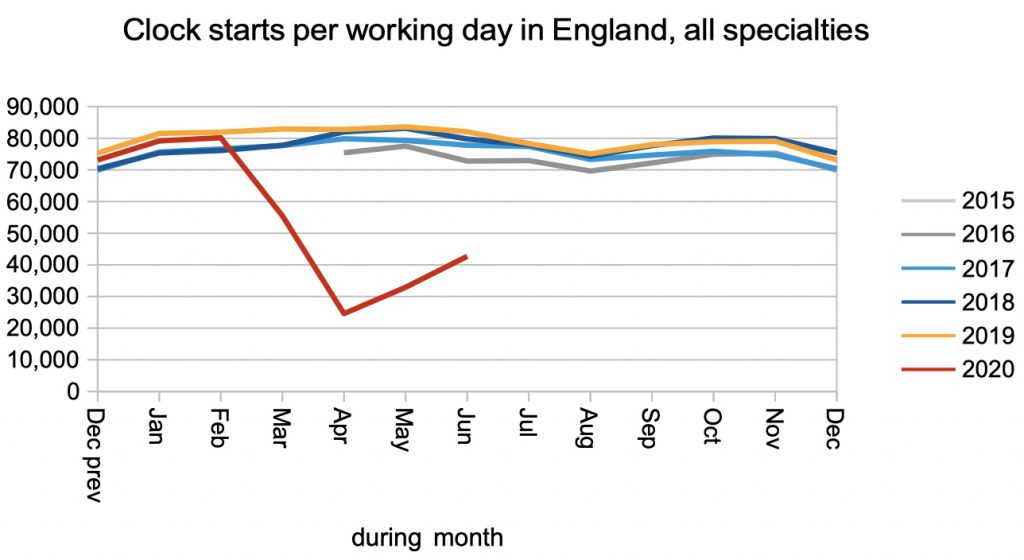
The rate of non-admitted clock stops, which includes administrative removals from the waiting list as well as patients discharged from clinic, increased very slightly from the April low.
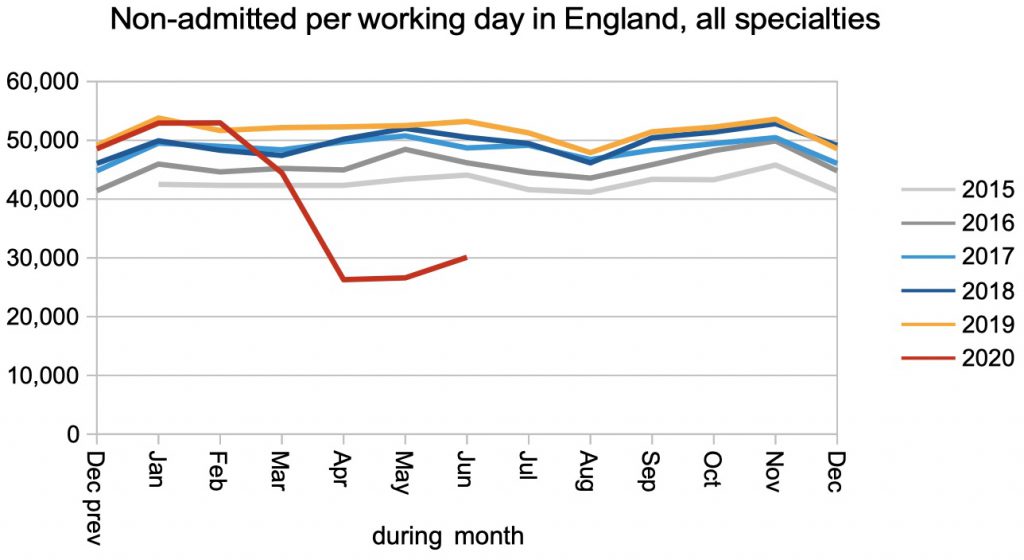
The admission rate (inpatients and daycases treated) increased significantly from the April low, but remained far below pre-covid levels and was unable to compete with the rising numbers of long-waiting patients on the list.
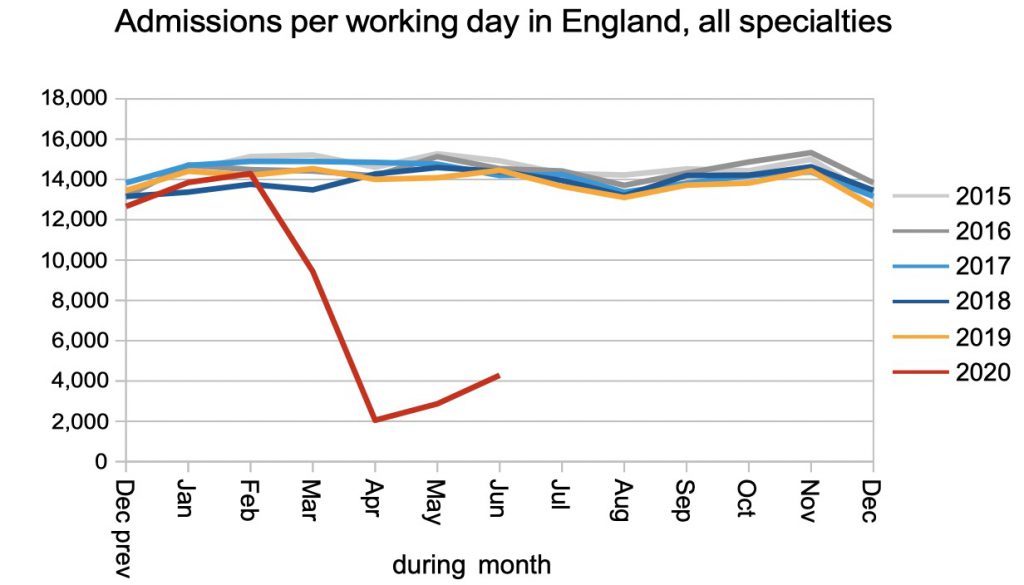
The net result was a broadly static waiting list. However this list does not include pent-up demand in the community that has not yet been referred.
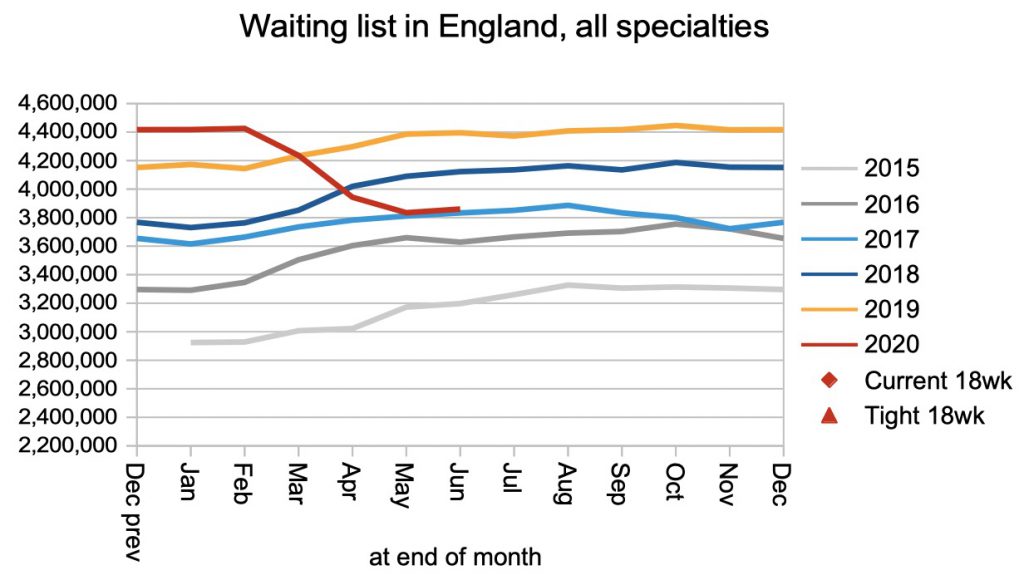
Waiting times continued to rise rapidly, by just over 3 weeks during the month, judging by the incomplete pathways figures.
The ‘admitted’ line jumped by a huge margin as the NHS started treating more of the longest-waiting patients, which is a good thing, but (as noted above) the volumes were small compared with the scale of the challenge.
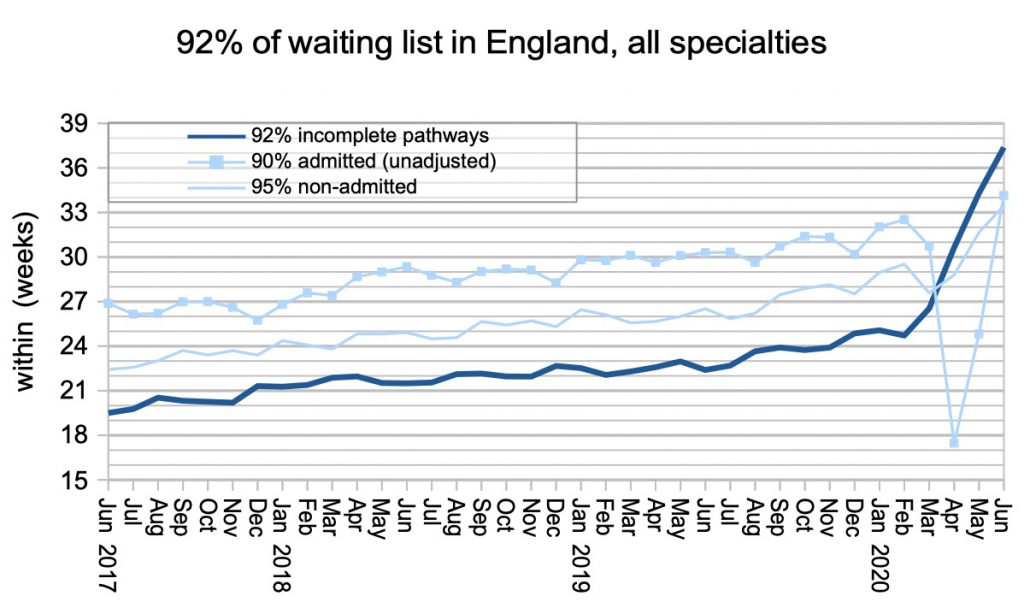
No specialty was spared the continued rapid growth in waiting times.
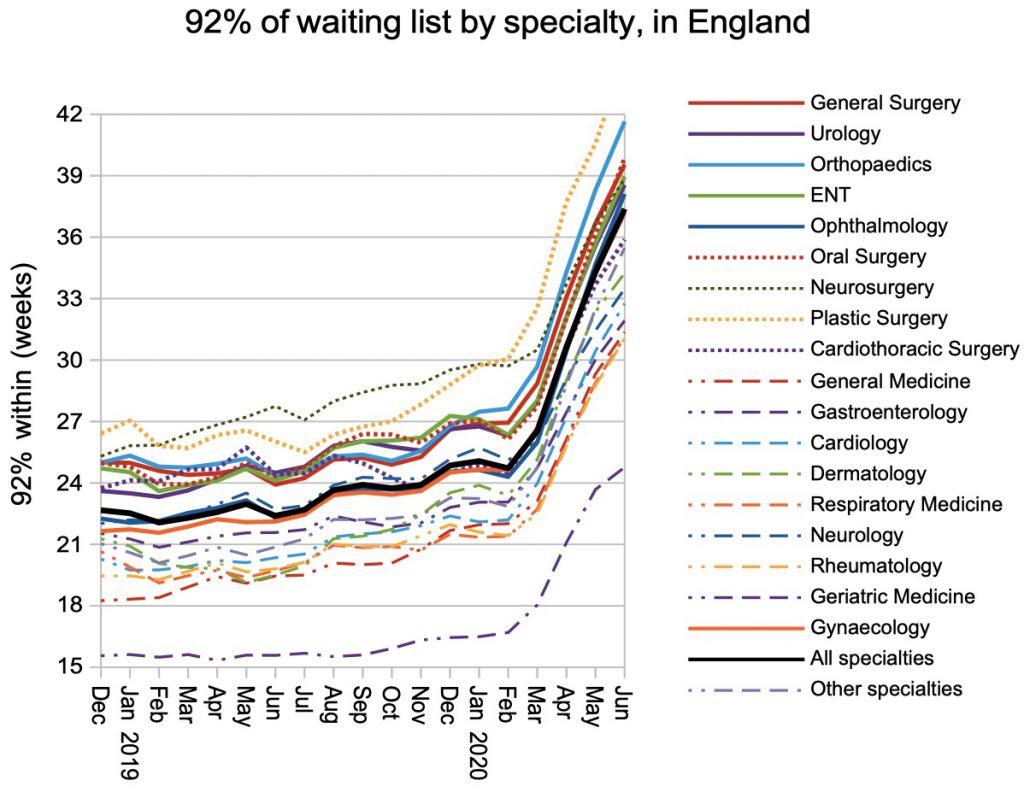
The number of one year waiters continued to rocket up, as more patients tipped over into this category. This is getting a lot of attention, but this very visible problem needs to be considered alongside the more serious but currently invisible clinical risk of long delays to those patients who have not yet been diagnosed.
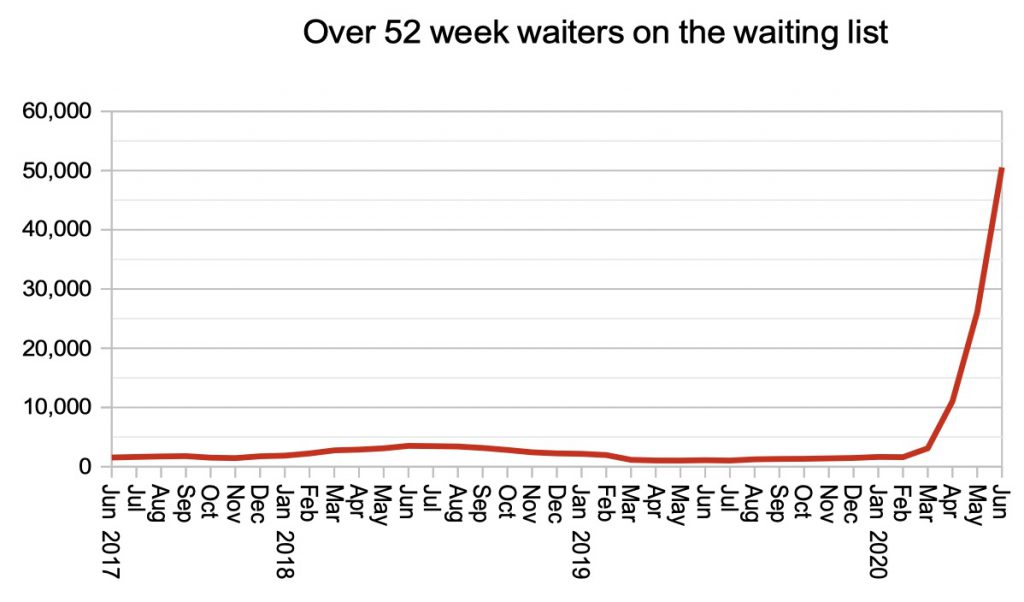
Local picture
Looking at every specialty in every provider, the proportion of local services achieving the 18 week target fell from 7.9 per cent to just 4.6 per cent.
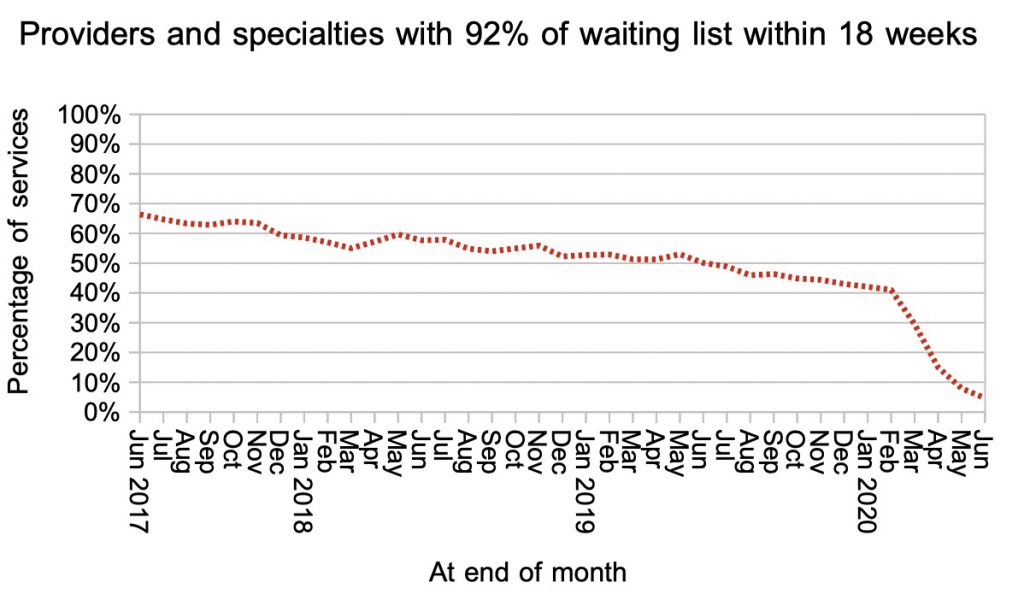
As in previous months since the elective shutdown began, the increase in waiting times was evenly seen across the board, with the exception of those services that are just achieving 18 weeks and managed to hang on.
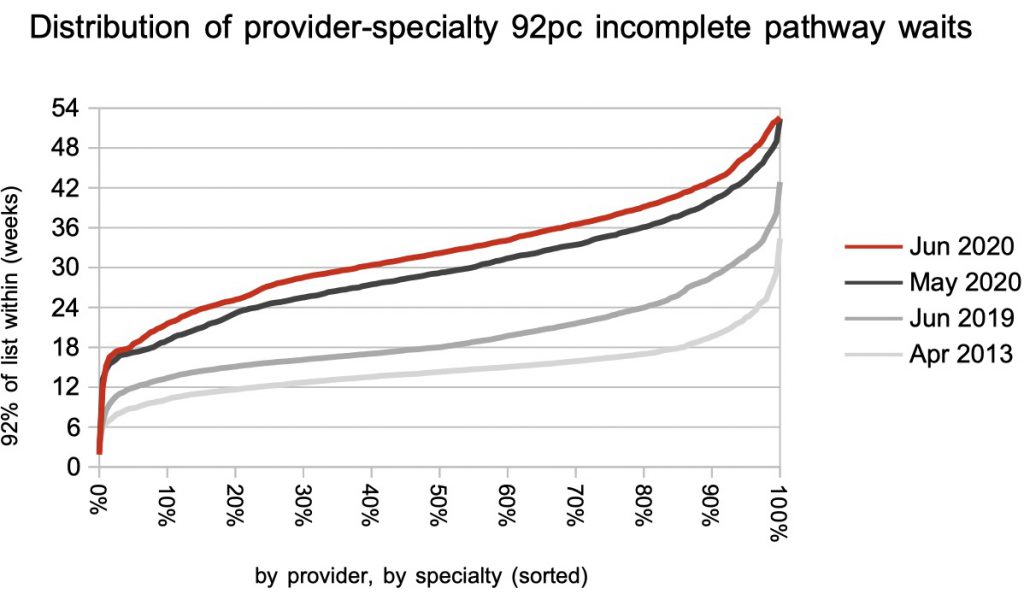
Referral-to-treatment data for July 2020, the third complete month of the covid-19 elective shutdown, is due out at 9:30am on Thursday 10th September.
Return to Post Index
Leave a Reply
You must be logged in to post a comment.